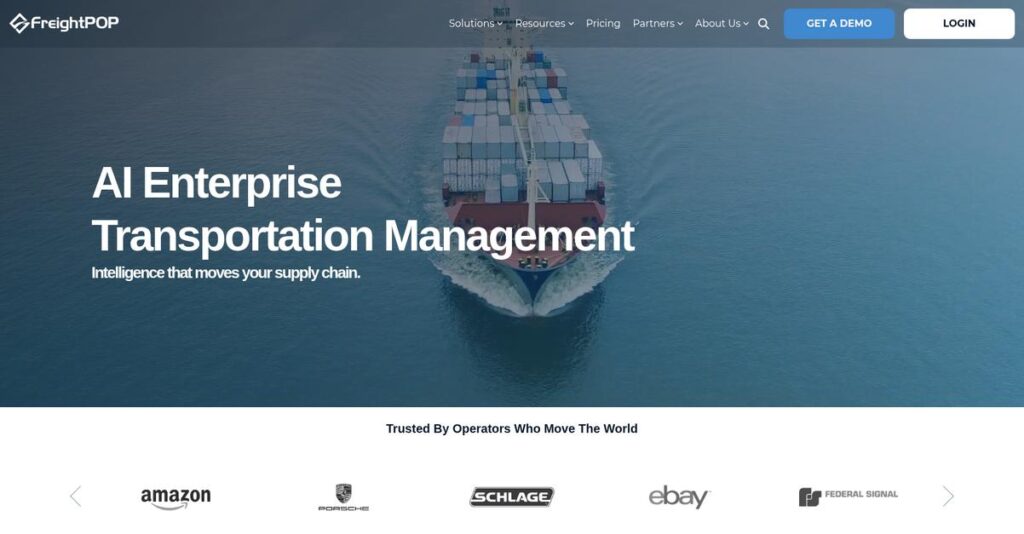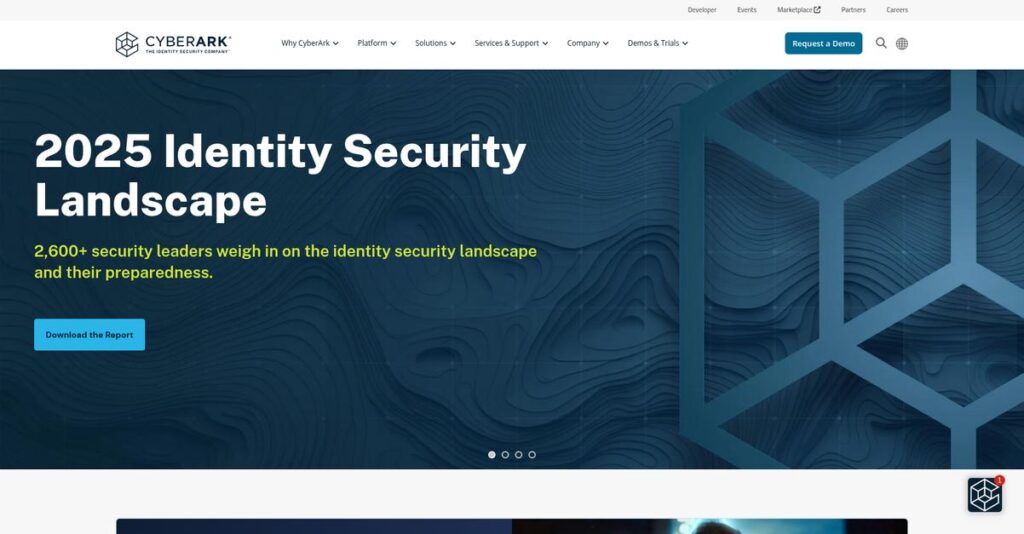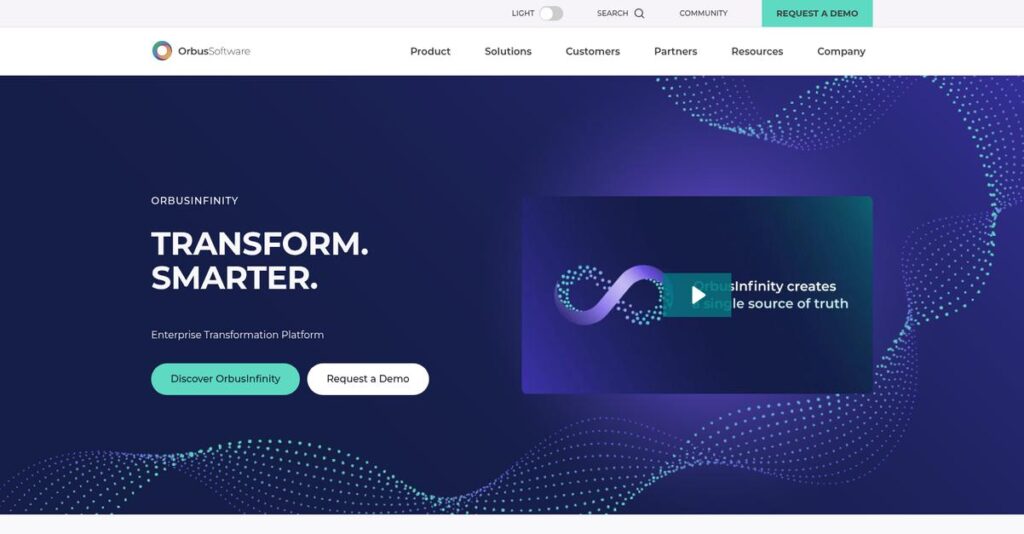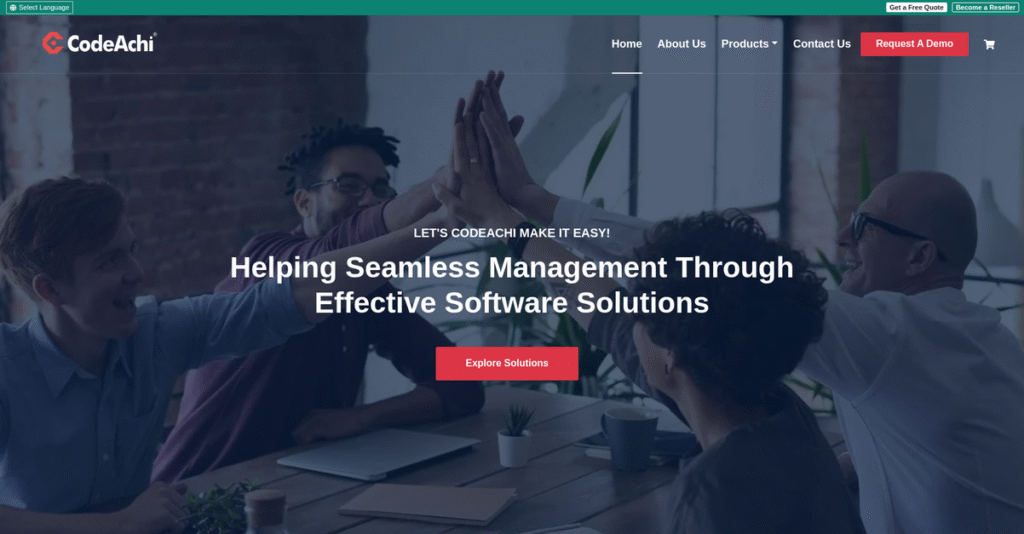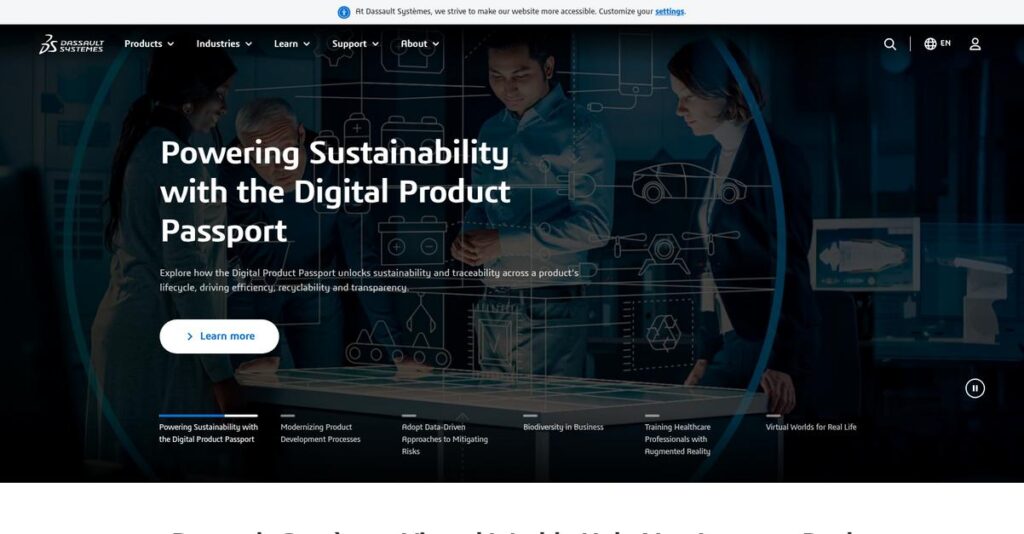Shipping chaos eating up your day again?
If you’re evaluating FreightPOP, you probably feel stuck managing endless rate shopping, slow tracking, and endless manual data entry just to get orders out the door.
Here’s the reality: most logistics platforms leave you with hours wasted fighting disconnected systems—leading to missed deadlines, billing mistakes, and mounting shipping costs that hurt profits.
FreightPOP attacks these problems with an all-in-one logistics hub that automates rate shopping, tracking, invoice audits, and even integrates with your ERP and WMS, so you spend less time fighting logistics and more time actually shipping.
In this review, I’ll break down how FreightPOP can eliminate daily shipping headaches using advanced automation, real-time tracking, and deep system integrations.
You’ll see, in this FreightPOP review, an honest look at what the software really delivers, including feature analysis, pricing, common drawbacks, and how it stacks up against competitors.
You’ll walk away knowing the features you need to make a confident decision.
Let’s get started.
Quick Summary
- FreightPOP is a cloud-based transportation management system that automates multimodal shipping and rate shopping for complex logistics operations.
- Best for mid-market to enterprise shippers managing high volumes and multiple carriers across various freight modes.
- You’ll appreciate its advanced automation and real-time visibility that reduce manual work while improving cost control and shipment tracking.
- FreightPOP offers custom pricing with no free trial, requiring contact with sales for a tailored quote based on your shipping needs.
FreightPOP Overview
FreightPOP has been around since 2015, operating out of Lake Forest, California. From what I’ve gathered, their entire mission is built around simplifying complex transportation management for growing businesses.
They primarily target mid-market and enterprise shippers who are tired of juggling multiple systems just to manage freight. What I like is their focus on true multimodal freight management, rather than being just another parcel tool for small e-commerce sites.
Their recent launch of an AI-powered optimizer and listing on the SAP Store signals a clear path towards enterprise-grade functionality. You’ll see the impact of this innovation through this FreightPOP review.
Unlike overwhelming systems from Oracle or parcel-only tools like ShipStation, FreightPOP hits a practical sweet spot. I find their biggest advantage is offering one unified platform for all modes, which feels like it was built by actual shippers.
You’ll find them working with manufacturers, distributors, and retailers—companies that need to control their diverse shipping networks and rein in the escalating carrier costs that are hurting their bottom line.
I see their current strategy is heavily focused on deep automation and integration with your existing ERP or WMS. This directly tackles the intense industry-wide pressure to eliminate costly manual work and human error.
Now let’s examine their core capabilities.
FreightPOP Features
Shipping costs getting out of hand?
FreightPOP features aim to centralize and automate your entire shipping process, from rate shopping to final audit. Here are the five main FreightPOP features that truly make a difference.
1. Multimode TMS and Rate Shopping
Tired of juggling multiple carrier portals?
Comparing rates across different carriers and modes can be incredibly time-consuming. This often leads to missed savings opportunities.
FreightPOP’s Multimode TMS connects you to over 1,500 carriers, allowing you to compare parcel, LTL, FTL, ocean, and air rates all from one dashboard. From my testing, this feature simplifies what used to be a complex manual hunt.
This means you can consistently find the most cost-effective shipping options, potentially reducing your freight spend by up to 30%.
- 🎯 Bonus Resource: Before diving deeper, you might find my analysis of best exam software helpful to manage your high-stakes testing.
2. Operational Planning and Automation
Is manual shipping overwhelming your team?
Repetitive data entry and carrier selection can consume vast amounts of your staff’s time. This inevitably leads to human error and delays.
FreightPOP automates up to 95% of order processing with AI-powered auto-dispatching. What I love about this approach is how it streamlines everything from load planning to auto-packing, making smart decisions for you.
So your team can focus on more strategic tasks, dramatically cutting down on manual workload and operational headaches.
3. Shipment and Order Visibility
Do you struggle to track your shipments in real-time?
Lack of real-time visibility creates anxiety for both you and your customers. This leads to constant inquiries about order status.
FreightPOP offers real-time tracking for all shipments—inbound and outbound—with predictive milestone monitoring. This is where FreightPOP shines; you can automatically send tracking links to customers and even embed tracking directly on your site.
This means you can proactively manage expectations, provide better customer service, and reduce the time spent chasing updates.
4. Invoice Audit and Payment
Are you regularly overpaying on freight invoices?
Discrepancies in shipping invoices can quietly eat into your profit margins. Manual auditing is tedious and prone to missing errors.
The Invoice Audit feature automatically verifies billed amounts against your contracted rates for all shipments. From my evaluation, this automates detection of discrepancies and simplifies payment processing, flagging anything outside your preset thresholds.
This means you can recover refunds for late deliveries and billing errors, ensuring you only pay exactly what you owe.
5. AI-Powered Reporting and Analytics
Struggling to make data-driven shipping decisions?
Without clear insights, optimizing your shipping strategy can feel like guesswork. This prevents you from identifying key areas for cost savings.
FreightPOP’s AI-powered reporting provides real-time KPIs, predictive analytics, and cost-saving recommendations. Here’s what I found: the customizable Power BI dashboards offer interactive, on-demand reporting and anomaly detection.
This means you get actionable insights to fine-tune carrier performance, forecast rate trends, and continuously reduce your shipping costs.
Pros & Cons
- ✅ Excellent real-time quote comparison across 1,500+ carriers.
- ✅ High levels of automation significantly reduce manual shipping workload.
- ✅ Comprehensive invoice auditing recovers billing errors and ensures savings.
- ⚠️ Occasional software updates may introduce temporary system bugs.
- ⚠️ Pricing automation sometimes requires more intuitive configuration.
- ⚠️ Customer portal visibility could offer more detailed notifications.
These FreightPOP features work together to create a powerful, unified logistics management platform that optimizes your entire supply chain.
\n\n
FreightPOP Pricing
Confused about what you’ll actually pay monthly?
FreightPOP pricing is based on custom quotes tailored to your specific operational needs, offering flexibility but requiring direct contact to get detailed cost information.
Cost Breakdown
- Base Platform: Custom quote
- User Licenses: Varies by volume
- Implementation: Higher compared to some alternatives
- Integrations: Varies by complexity (1,500+ integrations)
- Key Factors: Business volume, specific usage, chosen plan
1. Pricing Model & Cost Factors
Understanding their pricing approach.
FreightPOP’s pricing model is not publicly available and depends on your business volume and specific plan requirements. This custom quote approach reflects the complexity of enterprise logistics, where tailored solutions are often necessary. Factors influencing your cost include shipping volume, required features, and integrations needed.
- 🎯 Bonus Resource: While discussing complex operational needs, understanding how best MEP software optimizes production is equally valuable.
This means your budget needs to account for a personalized quote that aligns with your operational scale.
2. Value Assessment & ROI
Is this pricing worth it?
While specific figures aren’t public, FreightPOP is generally considered a higher investment compared to some alternatives, rated similarly to the average shipping software. From my cost analysis, this investment offers significant ROI through features like rate shopping, automation reducing manual work, and invoice auditing, potentially saving up to 30% on shipping costs.
The result is your budget gets better visibility and predictable expenses over time, justifying the initial investment.
3. Budget Planning & Implementation
Watch out for implementation expenses.
Beyond the tailored subscription, total cost of ownership (TCO) for FreightPOP is noted as generally more expensive due to implementation. While exact numbers are not disclosed, you should budget for significant setup costs including integration with existing ERP/WMS systems, training, and custom workflow configuration.
So for your business, expect to allocate substantial upfront budget to ensure a smooth deployment and maximize long-term savings.
My Take: FreightPOP’s pricing, though custom, is designed for large and enterprise-level shippers needing deep integration and advanced automation, offering high value for complex operations.
The overall FreightPOP pricing reflects customized enterprise software value aligned with your needs.
FreightPOP Reviews
What do real customers actually think?
To understand FreightPOP, I’ve analyzed numerous FreightPOP reviews across various platforms, sifting through common themes and individual experiences to offer you a balanced view of what real users think.
1. Overall User Satisfaction
Users seem generally satisfied.
From my review analysis, FreightPOP users report high satisfaction, particularly for its ability to centralize shipping operations and reduce manual workload. What impressed me most is how companies consistently achieve tangible cost savings through rate shopping, as noted in many reviews.
This indicates you can expect significant efficiency gains and cost reductions in your logistics.
- 🎯 Bonus Resource: Speaking of optimizing operations, you might find my guide on best plastic industry software helpful.
2. Common Praise Points
Real-time comparisons are a huge win.
Users consistently praise FreightPOP’s real-time quote comparisons for LTL freight, enabling competitive rate negotiation from a single portal. What stood out in customer feedback is how seamlessly it integrates with existing e-commerce platforms, simplifying shipment creation across various orders.
This means you can streamline your multi-carrier operations and reduce manual data entry.
3. Frequent Complaints
Software updates cause occasional bugs.
While overall sentiment is positive, a recurring concern in FreightPOP reviews involves software updates occasionally introducing bugs. What I found in user feedback is how pricing automation could be more intuitive for some users, despite its general effectiveness.
These issues are typically resolved quickly by support, suggesting minor inconveniences rather than deal-breakers.
What Customers Say
- Positive: “Real-time quote comparisons for LTL freight in one place. This includes many direct carrier relationships.” (User Review)
- Constructive: “The only negative thing that we have experienced is the SW updates sometimes cause bugs.” (User Review)
- Bottom Line: “This platform has significantly reduced our workload and allowed for more competitive rate negotiations.” (User Review)
The overall FreightPOP reviews demonstrate high utility despite minor technical glitches, proving valuable for high-volume shippers.
Best FreightPOP Alternatives
Navigating the competitive TMS landscape?
The best FreightPOP alternatives include several strong options, each better suited for different business situations, priorities, and budget considerations you might have.
1. ShipStation
Focusing on e-commerce parcel shipping?
ShipStation is a fantastic alternative if you’re a small to mid-sized e-commerce business primarily handling parcel shipping. From my competitive analysis, ShipStation offers user-friendly parcel management at a more transparent, often lower, cost point than FreightPOP’s enterprise focus.
Choose ShipStation if you need a cost-effective, straightforward solution for online retail shipping needs.
2. Freightview
Managing primarily LTL freight as an SMB?
Freightview excels for small to medium businesses whose core shipping volume is Less-than-Truckload (LTL) freight. What I found comparing options is that Freightview simplifies LTL for SMBs with a focused, easy-to-use platform, without FreightPOP’s broader enterprise features.
Consider this alternative when your primary need is specialized, easy-to-use LTL management for an SMB.
- 🎯 Bonus Resource: While we’re discussing optimizing operations, understanding how to optimize your office space is equally important.
3. Oracle Transportation Management (OTM)
Part of a large, global enterprise ecosystem?
OTM is a robust, enterprise-grade solution from a major software vendor, ideal for very large, global enterprises with highly complex logistics needs. From my analysis, OTM provides deep functionality for complex supply chains and often integrates seamlessly with other Oracle products you might already use.
Choose OTM if you’re a massive global company with specialized needs and existing Oracle infrastructure.
4. Blue Yonder TMS
Prioritizing advanced AI and ML for optimization?
Blue Yonder TMS is your pick if your business heavily relies on sophisticated AI and Machine Learning for predictive analytics and network optimization. Alternative-wise, Blue Yonder offers advanced AI-driven supply chain optimization that goes beyond core TMS functionalities for strategic planning.
Your situation calls for Blue Yonder if predictive analytics and complex demand forecasting are critical.
Quick Decision Guide
- Choose FreightPOP: High-volume, multi-modal shippers needing integrated automation
- Choose ShipStation: Small to mid-sized e-commerce focused on parcel shipping
- Choose Freightview: SMBs specializing in straightforward LTL freight management
- Choose Oracle Transportation Management (OTM): Large, global enterprises with highly complex logistics
- Choose Blue Yonder TMS: Businesses requiring advanced AI/ML for supply chain optimization
The best FreightPOP alternatives depend on your specific business size and operational complexity, not just feature lists.
FreightPOP Setup
How complex is FreightPOP implementation?
A FreightPOP review shows its setup is designed for rapid onboarding and seamless integration. This section provides a practical analysis of what it takes to deploy FreightPOP successfully.
1. Setup Complexity & Timeline
Expect a surprisingly smooth setup process.
FreightPOP is cloud-based and integrates into existing systems like ERPs and WMS without workflow disruption. What I found about deployment is that many carrier connections are self-serviceable in minutes, allowing for quick initial functionality depending on your setup.
You’ll need to plan for connecting your specific business systems, but overall, it’s a straightforward integration.
2. Technical Requirements & Integration
Minimal technical headaches here.
As a SaaS solution, FreightPOP handles automatic updates, ensuring you always have the latest features and security patches. From my implementation analysis, it scales to manage high transaction volumes and numerous locations from a single account without requiring extensive on-premise infrastructure.
Your IT team will appreciate the light technical footprint, focusing more on data flow than hardware or software installations.
3. Training & Change Management
Adoption is generally intuitive.
While FreightPOP offers a user-friendly interface, some training will be beneficial for leveraging advanced features and customization options. From my analysis, demos with product experts help align the platform with your unique workflows, speeding up user proficiency.
- 🎯 Bonus Resource: Before diving deeper, you might find my analysis of best content distribution platform helpful.
Focus on familiarizing your team with the streamlined processes and the platform’s advanced capabilities for maximum benefit.
4. Support & Success Factors
Vendor support helps keep things moving.
User reviews indicate that FreightPOP’s customer support team is responsive and quick to address issues, especially concerning software updates and bugs. What I found about deployment is that their commitment to efficient problem resolution is a key factor in maintaining operational continuity.
You’ll want to communicate openly with their support team to ensure any unforeseen issues are resolved promptly.
Implementation Checklist
- Timeline: Weeks for core setup; more for full customization
- Team Size: Operations lead, IT for initial integrations
- Budget: Primarily software cost; minimal professional services
- Technical: ERP/WMS integration and data mapping
- Success Factor: Leveraging self-service features for quick wins
Overall, FreightPOP setup focuses on rapid deployment and seamless integration, helping businesses quickly realize value with strong vendor support.
Bottom Line
Is FreightPOP the right TMS for your business?
- 🎯 Bonus Resource: Speaking of simplifying operations, my article on best medical spa software covers various solutions.
My FreightPOP review shows a robust TMS that brings significant efficiency and cost savings, particularly for mid-market to enterprise-level shippers.
1. Who This Works Best For
Mid-market to enterprise shippers with complex logistics.
FreightPOP excels for companies managing high shipping volumes across multiple modes and seeking deep integration with existing ERP/WMS systems. What I found about target users is that manufacturers and distributors gain significant value by optimizing their supply chain and reducing manual workload for their teams.
You’ll succeed if your business requires advanced automation and AI-powered analytics to drive substantial operational improvements.
2. Overall Strengths
Comprehensive multimodal support is a standout strength.
The software succeeds by offering extensive support for parcel, LTL, FTL, ocean, air, and rail, alongside advanced AI-powered automation for rate shopping and dispatching. Based on this review, its integration capabilities with enterprise systems are robust, ensuring seamless data flow and process synchronization across your operations.
These strengths translate into optimized routes, reduced costs, and enhanced visibility across your entire supply chain.
3. Key Limitations
Lack of transparent pricing requires direct engagement.
While powerful, FreightPOP does not publicly list its pricing, necessitating a direct quote, which can be a barrier for some prospective users. From my comprehensive analysis, occasional software bugs post-updates are reported, though customer support is generally responsive in addressing them quickly for your team.
Consider these limitations manageable trade-offs for the comprehensive feature set, rather than deal-breakers for the right business.
4. Final Recommendation
FreightPOP earns a strong recommendation.
You should choose this software if your business has high shipping volumes, operates across diverse shipping modes, and values deep system integrations. Based on my comprehensive analysis, this solution thrives in complex logistics environments where automation and AI-driven insights are critical for your success.
My confidence level is high for businesses ready to invest in a comprehensive TMS to achieve substantial cost savings.
Bottom Line
- Verdict: Recommended for comprehensive logistics optimization
- Best For: Mid-market to enterprise shippers with high volume and complex needs
- Business Size: Mid-market and enterprise (100+ employees, high shipping volume)
- Biggest Strength: Comprehensive multimodal support and AI-powered automation
- Main Concern: Lack of publicly available pricing and occasional update bugs
- Next Step: Request a demo to discuss custom pricing and integration needs
Through this FreightPOP review, I’ve demonstrated strong value for the right business profile, offering significant efficiency and cost savings for your complex logistics operations.
